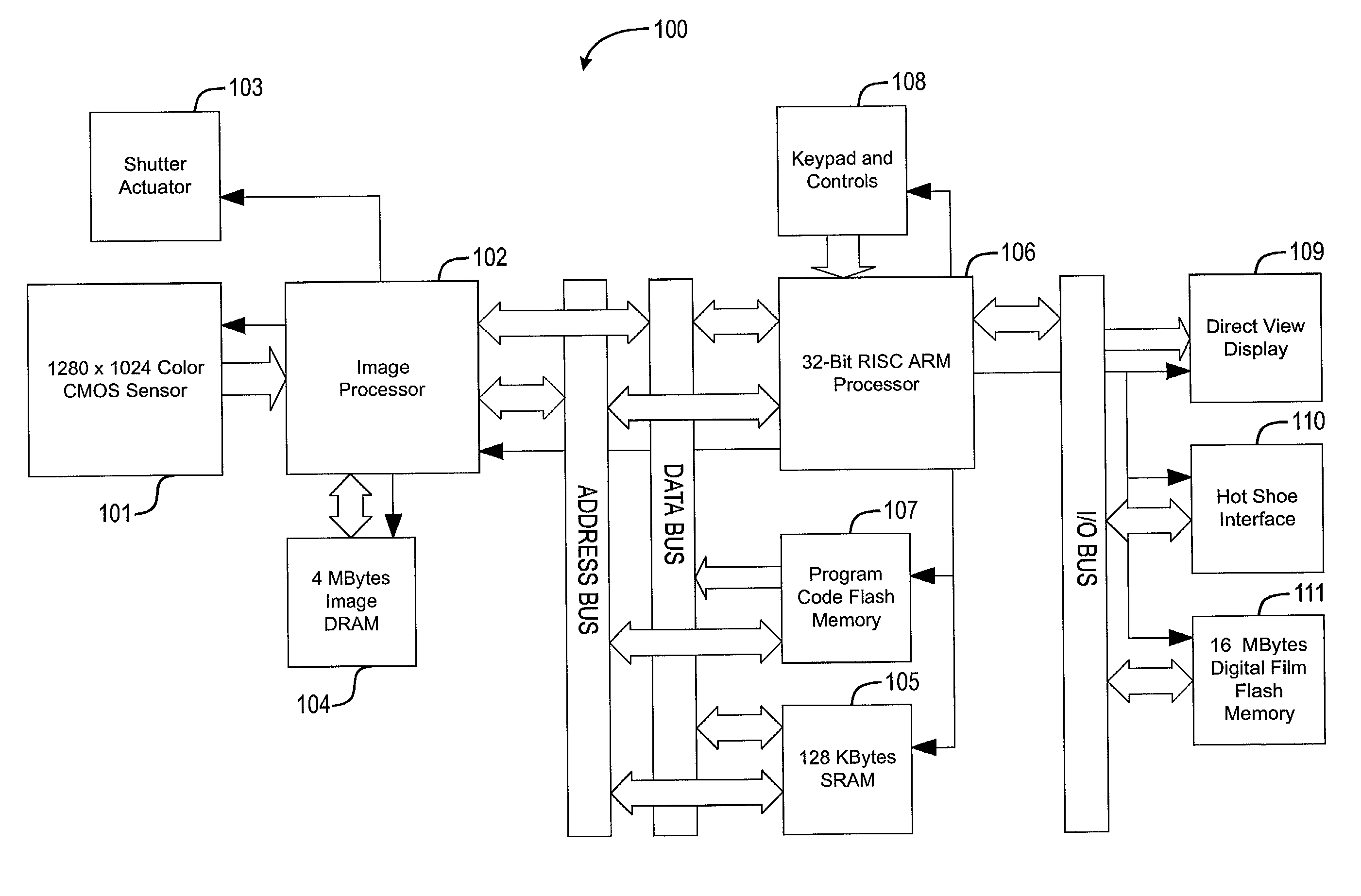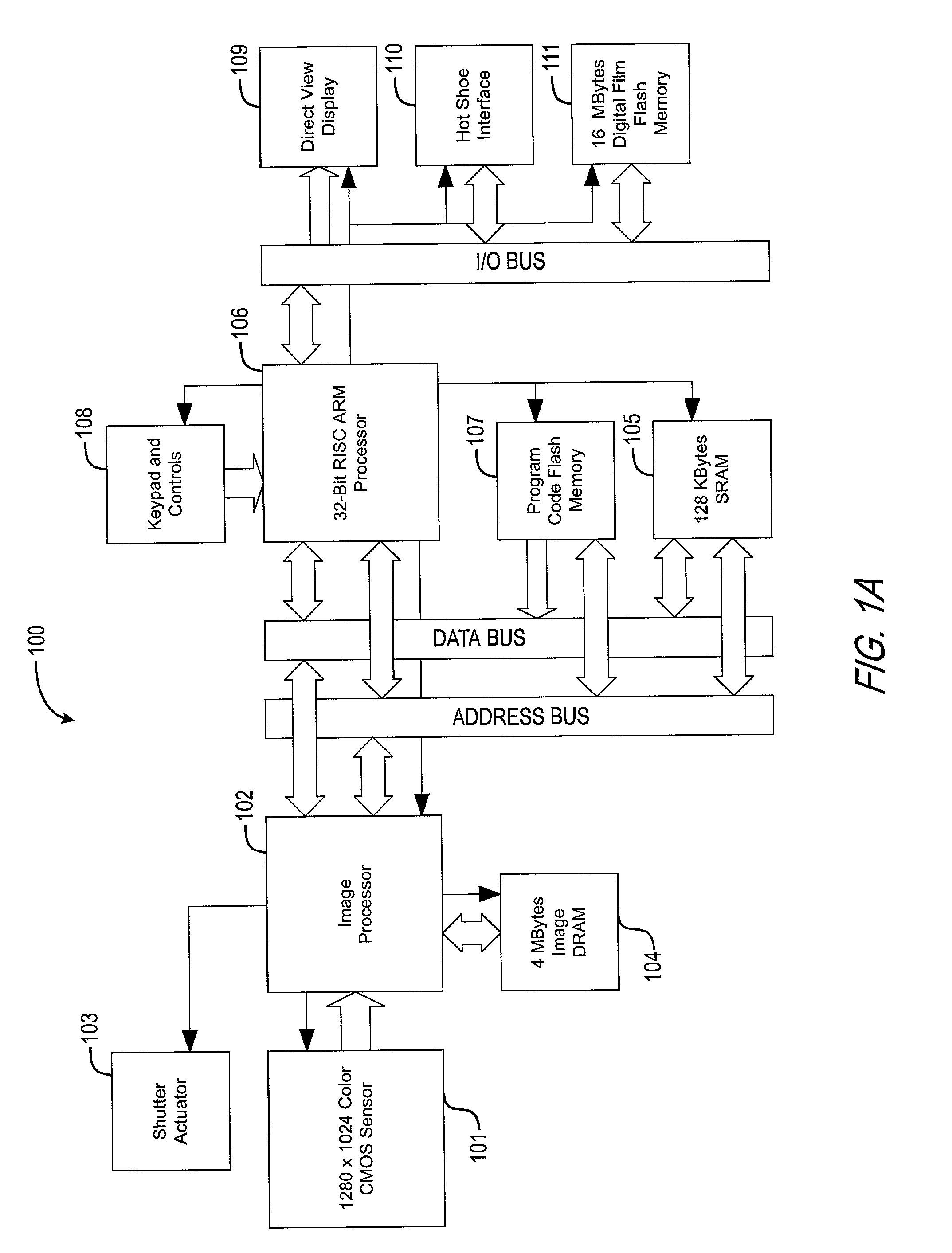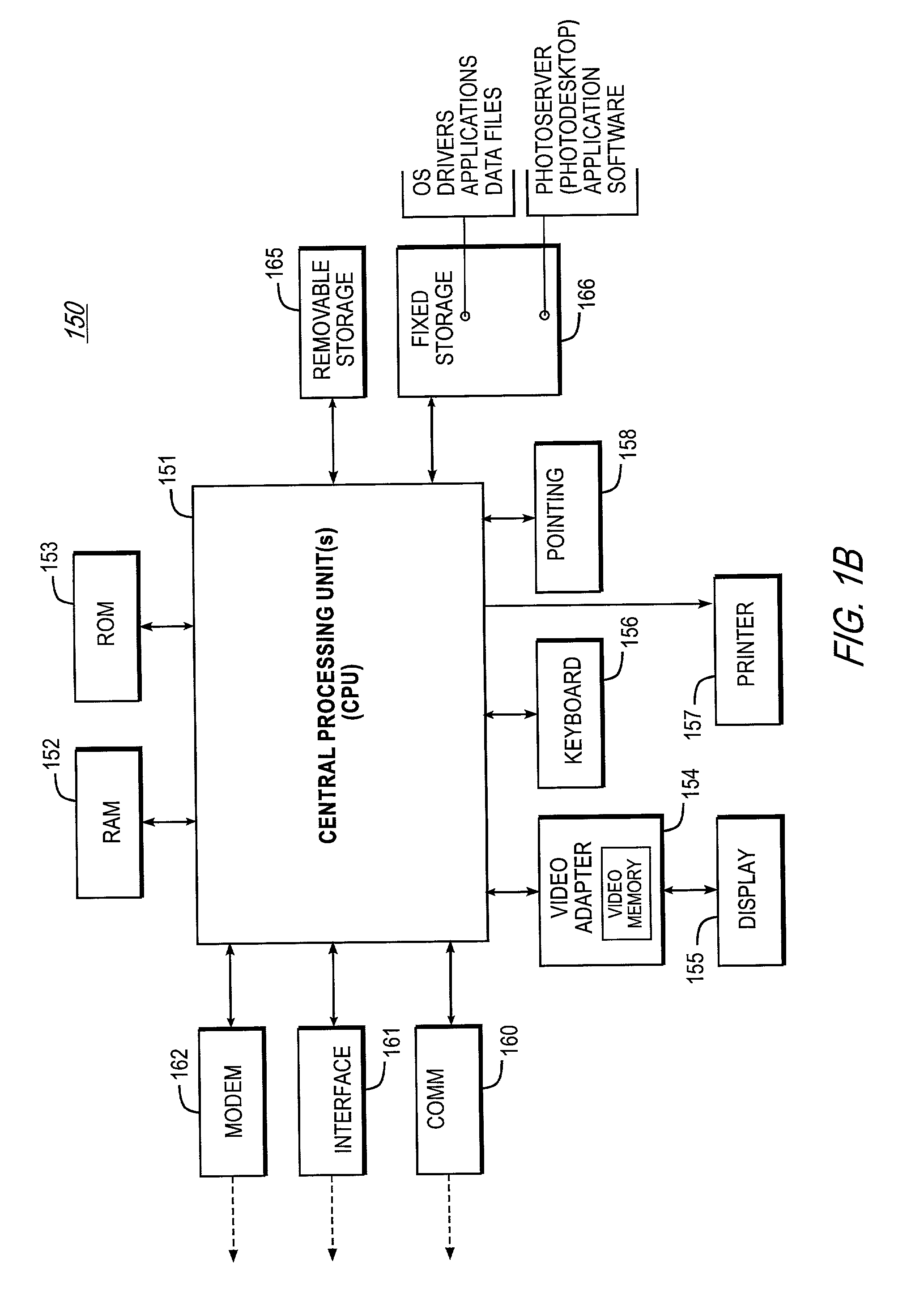[0022]A two-staged
image compression methodology of the present invention implements a
digital camera that allows users to take successive snapshots rapidly. The underlying strategy of the present invention assumes that the user will not take more than a few pictures (e.g., 3-6 pictures) in rapid succession. The first stage employs a relatively simple compression technique that is selected for its fast operation (i.e., requires fewer
processing resources), although it may not necessarily be as efficient in minimizing the
file size. The first stage partially compresses the image quickly, and temporarily saves this
record either in RAM or in
flash memory. This approach immediately frees up both memory and processor resources of the camera, thereby facilitating the user's ability to continue shooting pictures without waiting for full compression
processing of the current picture. The second stage of the on-camera compression, which employs more thorough compression, is deferred as a
background process for when the user is no longer using the camera to take successive photographs.
[0026]The stage 1 compression implements a Discrete
Wavelet Transformation (DWT), which minimizes “pixelization” artifacts, to optimize the data for compression. Each
color plane in each band is individually transformed by DWT, rendering it ready for an initial (small-step) quantization. The DWT decomposes the image into the LL band, LH band, HL band, and HH band. Each band is quantized (i.e., divided) by possibly a different quantization step size. Next, each
bit plane is low-complexity entropy encoded, which is a fast encoding process. The working embodiment of this invention uses a run-length encoding (RLE) technique. As another implementation of low-complexity
entropy encoding, one could use
Huffman coding, which would result in
JPEG-like speeds.
[0028]The encoded picture is transmitted wirelessly to a
server, where it is transcoded to
JPEG2000.
Transcoding for JPEG2000 involves decoding the bit planes and re-encoding them with the JPEG2000-specific
bit plane coding method. This method codes each
bit plane in 3 passes. Further, it does not employ the run-length encoding scheme that is used to pare down the number of bits coded. Together, these two factors contribute to much lower performance. However, since the JPEG2000 process runs on powerful backend servers, this loss of performance is not perceived by the user. Furthermore, the user gets the picture in an industry-standard format, that can be manipulated by other systems, for display, or the like.
[0030]This methodology may be embodied within a
digital camera device providing improved latency time between acquiring pictures. The
digital camera device includes an image buffer for capturing digital images (i.e., snapshots). The digital camera also includes a
shutter button or other user-activated button, integrated into the digital camera device, for generating a user request to capture a sequence of digital images. Upon capture, these digital images are stored in the image buffer. Stage 1 compression is embodied within the device as a first compression module, for temporarily compressing at least some of the digital images upon capture, thereby freeing up available storage in the image buffer. In conjunction with this first compression module, the device includes a decompression module capable of reversing the stage 1 compression (or at least returning the images to their approximate original state). More particularly, the decompression module operates for decompressing any of the digital images that were temporarily compressed at some point in time after activation of said user-activated button. For more-thorough compression, the device also includes a second compression module for applying stage 2 compression, thereby compressing the digital images more thoroughly than that provided by the first compression module. Images that have been compressed with stage 2 compression are suitable for non-
temporary storage to a persistent media (e.g.,
flash memory), and / or for transfer (especially,
wireless transfer) to a remote device for further processing (e.g., transferred to a
server computer for transformation into a JPEG or JPEG 2000 image file for online sharing).
 Login to View More
Login to View More  Login to View More
Login to View More 


